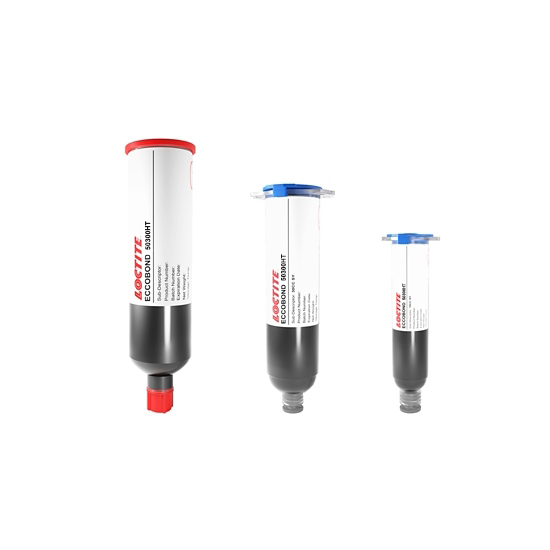LOCTITE ECCOBOND 50300HT
Harmonization Code : 3907.30.00.90 | Polyacetals, other polyethers and epoxide resins, in primary forms; polycarbonates, alkyd resins, polyallyl esters and other polyesters, in primary forms : Epoxide resins : Other
Main features
- Low viscosity
- Low CTE
- Glob top
Product Description
LOCTITE® ECCOBOND 50300HT is designed for glob top encapsulation of wire bonded bare die on epoxy laminate and similar substates. The formulation of this single component material ensures a long pot and a very stable viscosity during use.
LOCTITE® ECCOBOND 50300HT is a low viscosity, low CTE product that is recommended for use on ICs with high wire profiles and in applications where the spreading of the glob top during cure must be controlled.
Cure Schedule
- 2 hours @ 150°C
Low Stress Cure Schedule
- 1 hour @ 120°C + 1 hour @ 150°C
For best results, substrate should be preheated (up to a maximum of 70ºC) to obtain the optimum flow under and around the wires.
Technical Specifications
| General Properties | |||||||||
| Pot Life Pot Life Pot life is the amount of time it takes for the viscosity of a material to double (or quadruple for lower viscosity materials) in room temperature after a material is mixed. It is closely related to work life but it is not application dependent, less precise and more of a general indication of how fast a system is going to cure. | 168 hours | ||||||||
| |||||||||
| Physical Properties | |||||||||
| Viscosity Viscosity Viscosity is a measurement of a fluid’s resistance to flow. Viscosity is commonly measured in centiPoise (cP). One cP is defined as the viscosity of water and all other viscosities are derived from this base. MPa is another common unit with a 1:1 conversion to cP. A product like honey would have a much higher viscosity -around 10,000 cPs- compared to water. As a result, honey would flow much slower out of a tipped glass than water would. The viscosity of a material can be decreased with an increase in temperature in order to better suit an application | 130,000 mPa.s | ||||||||
| Chemical Properties | |||||||||
| |||||||||
| Thermal Properties | |||||||||
| |||||||||
| Glass Transition Temperature (Tg) Glass Transition Temperature (Tg) The glass transition temperature for organic adhesives is a temperature region where the polymers change from glassy and brittle to soft and rubbery. Increasing the temperature further continues the softening process as the viscosity drops too. Temperatures between the glass transition temperature and below the decomposition point of the adhesive are the best region for bonding. The glass-transition temperature Tg of a material characterizes the range of temperatures over which this glass transition occurs. | 140 °C | ||||||||
| Thermal Conductivity Thermal Conductivity Thermal conductivity describes the ability of a material to conduct heat. It is required by power packages in order to dissipate heat and maintain stable electrical performance. Thermal conductivity units are [W/(m K)] in the SI system and [Btu/(hr ft °F)] in the Imperial system. | 0.63 W/m.K | ||||||||



